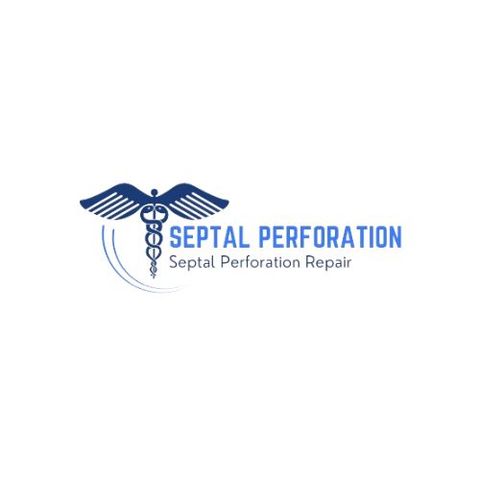Is That a Cold or Something More? Understanding Nasal Perforation Symptoms

Descarga y escucha en cualquier lugar
Descarga tus episodios favoritos y disfrútalos, ¡dondequiera que estés! Regístrate o inicia sesión ahora para acceder a la escucha sin conexión.
Descripción
When experiencing nasal discomfort, it's common to assume it's just a cold. However, certain symptoms may indicate something more serious, such as a nasal perforation. Understanding the symptoms of nasal...
mostra más- Chronic use of nasal sprays: Prolonged use of decongestant nasal sprays can dry out the nasal membranes, leading to irritation and perforation.
- Trauma: Injuries to the nose, whether from accidents, surgeries, or aggressive nose-picking, can damage the septum.
- Infections: Recurrent or untreated infections can weaken the nasal tissues.
- Drug use: The use of certain drugs, particularly cocaine, can cause significant damage to the nasal septum.
- Autoimmune diseases: Conditions such as Wegener's granulomatosis can lead to nasal perforation.
Key Symptoms of Nasal PerforationUnderstanding the symptoms of nasal perforation is crucial for early detection and treatment. Here are the primary signs to watch out for:1. Persistent Nasal CongestionUnlike the congestion associated with a cold, which usually clears up within a week, nasal congestion from a perforation may persist. This is because the hole in the septum disrupts the normal airflow, leading to a sensation of blockage that doesn't resolve with typical remedies.2. Frequent NosebleedsFrequent or unexplained nosebleeds can be a red flag. The septum is rich in blood vessels, and a perforation can make these vessels more vulnerable to bleeding. While occasional nosebleeds can occur with a cold, recurrent nosebleeds without an apparent cause may indicate a perforation.3. Whistling Sound When BreathingA telltale sign of nasal perforation is a whistling sound during breathing. This occurs when air passes through the hole in the septum, creating a whistle-like noise. This symptom is unique to nasal perforation and is not associated with a common cold.4. Crusting in the NoseNasal Septal Perforation can cause excessive crusting inside the nose. This occurs because the hole disrupts the normal mucus flow, leading to the buildup of dry, hardened mucus. This crusting can cause discomfort and even lead to further irritation and infection if not properly managed.5. Difficulty Breathing Through the NoseDifficulty breathing through the nose is another common symptom. The perforation can cause a disruption in airflow, making it harder to breathe normally. This can be particularly noticeable during physical activity or when lying down.6. Altered Sense of SmellSome individuals with nasal perforation may experience a change in their sense of smell. This can range from a reduced ability to smell to complete anosmia (loss of smell). This symptom is not typically associated with a cold and can be a significant indicator of nasal perforation.
Diagnosing Nasal PerforationIf you suspect you have a nasal perforation based on the symptoms above, it's essential to seek medical advice. Diagnosis typically involves a physical examination by an ENT (ear, nose, and throat) specialist. They may use an endoscope, a thin tube with a camera, to get a clear view of the inside of your nose. In some cases, imaging tests like CT scans may be necessary to assess the extent of the perforation.Treatment Options for Nasal PerforationTreatment for nasal perforation depends on the size of the hole and the severity of symptoms. Here are some common treatment approaches:Non-Surgical Treatments
- Saline Nasal Sprays: These can help keep the nasal passages moist, reducing discomfort and preventing crusting.
- Nasal Gels and Ointments: These can be applied to the inside of the nose to protect the tissue and promote healing.
- Humidifiers: Using a humidifier can add moisture to the air, which can help alleviate symptoms, especially in dry environments.
- Septal Button: A silicone device inserted into the perforation to close the hole temporarily.
- Septoplasty: A surgical procedure to repair the septum and close the perforation.
- Grafts: Tissue from another part of the body may be used to cover the perforation.
- Use nasal sprays cautiously: Follow the recommended usage guidelines for nasal sprays and avoid prolonged use.
- Protect your nose: Be mindful of potential trauma to the nose, especially during sports or other activities.
- Treat infections promptly: Address nasal infections quickly to prevent complications.
- Avoid nasal drug use: Refrain from using drugs that can damage the nasal septum.
- Stay hydrated: Keeping your nasal passages moist can help prevent dryness and irritation.
Información
| Autor | Septal Perforation |
| Organización | Septal Perforation |
| Página web | - |
| Etiquetas |
Copyright 2024 - Spreaker Inc. an iHeartMedia Company

Comentarios